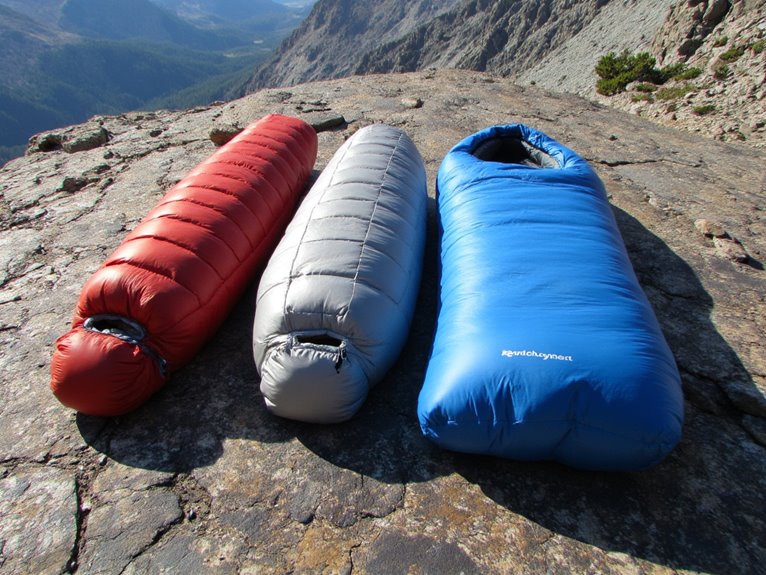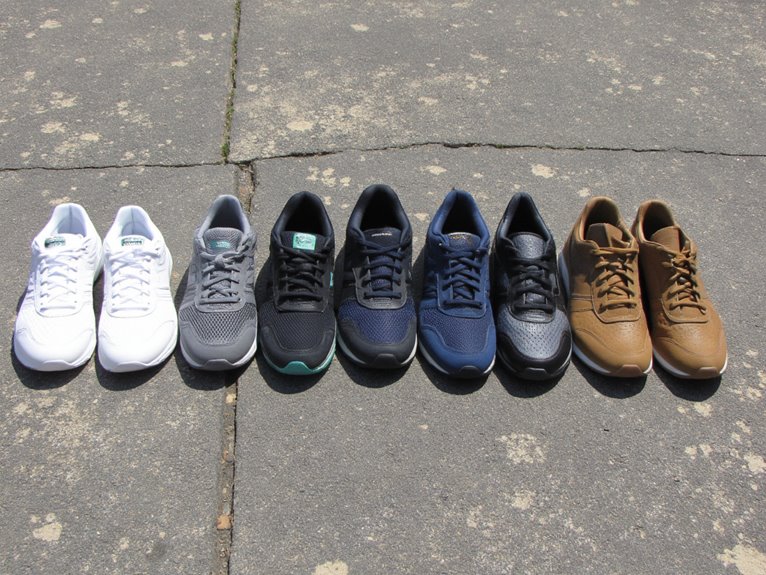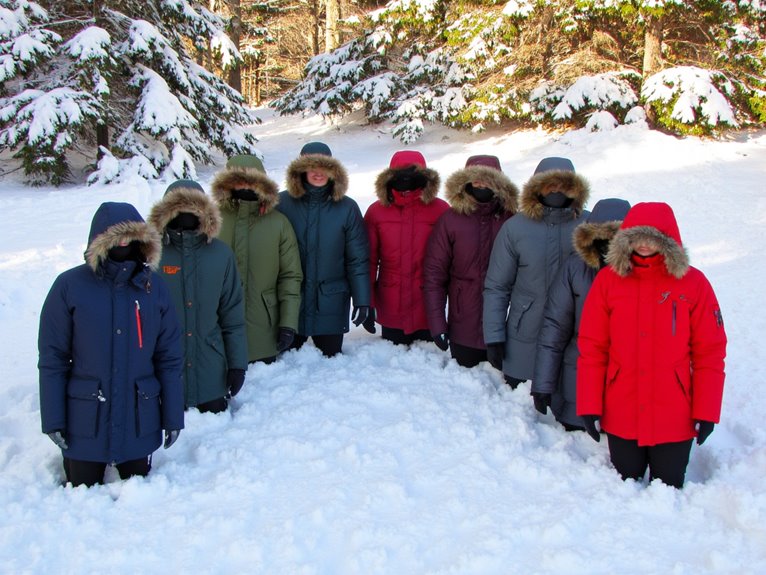Understanding Sleeping Bag Temperature Ratings (EN/ISO)
EN/ISO temperature ratings provide standardized measurements for sleeping bag performance using three categories: Comfort (lowest temperature for cold sleepers), Limit (minimum for warm sleepers), and Extreme (survival threshold). You’ll find these ratings based on laboratory testing with heated manikins under controlled conditions. However, real-world factors like wind, humidity, and your metabolism can affect performance by 10-15°F. Always add a safety buffer of 5-10°F below expected temperatures for reliable warmth and hypothermia prevention in the field.
We are supported by our audience. When you purchase through links on our site, we may earn an affiliate commission, at no extra cost for you. Learn more. Last update on 5th December 2025 / Images from Amazon Product Advertising API.
Notable Insights
- EN/ISO 23537-1:2016 standardizes sleeping bag temperature ratings with three levels: Comfort, Limit, and Extreme temperatures.
- Comfort rating indicates the lowest temperature for cold sleepers, while Limit rating shows minimum temperature for warm sleepers.
- Laboratory testing uses heated manikins under controlled conditions, but real-world factors like wind and humidity affect performance.
- Add a 5-15°F safety buffer to ratings and consider manufacturer recommendations of adding 25-30°F for comfort.
- Temperature ratings are crucial for hypothermia prevention; select bags rated below expected minimum temperatures for safety.
What Are EN/ISO Standards for Sleeping Bags?
When you’re shopping for a sleeping bag, you’ll encounter temperature ratings that seem standardized across brands—and that’s because they are. EN/ISO standards create this consistency through rigorous laboratory testing protocols.
The current benchmark is ISO 23537-1:2016, which evolved from earlier EN standards originally developed for sleeping bag evaluation. This standard applies specifically to adult-sized sleeping bags designed for sports and leisure use.
ISO 23537-1:2016 serves as today’s standardized testing protocol for adult recreational sleeping bags across the outdoor industry.
EN/ISO testing employs a thermal mannequin dressed in base layers, positioned on a standard foam mat within a controlled laboratory environment. This setup simulates real-world sleeping conditions while maintaining scientific precision.
The resulting temperature ratings represent temperature estimation based on standardized conditions.
However, these ratings have limitations—they don’t account for individual metabolism variations, environmental factors, or extreme cold applications.
The Three Temperature Ranges Explained
Every EN/ISO-rated sleeping bag displays three distinct temperature ratings that serve different purposes and user types. These ratings help you select appropriate gear based on your temperature sensitivities and intended use conditions.
The three temperature ranges include:
- Comfort Rating – Lowest temperature where cold sleepers can sleep comfortably without shivering
- Limit Rating – Minimum temperature for warm sleepers to maintain eight hours of sleep despite feeling cold
- Extreme Rating – Survival threshold for preventing hypothermia in emergency situations only
Comfort ratings suit temperature-sensitive users who prioritize warmth. Limit ratings work for those who sleep warm naturally. Extreme ratings aren’t intended for regular camping use.
These standardized measurements account for bag fabric performance under controlled testing conditions, allowing direct comparison between different manufacturers’ products regardless of brand-specific marketing claims.
For practical use, many experienced campers recommend adding 25-30°F to the manufacturer’s temperature ratings to determine your true comfort level in real-world conditions.
How Sleeping Bags Are Tested for Temperature Ratings
The accuracy of sleeping bag temperature ratings depends on rigorous laboratory testing using the ISO 23537 standard, which replaced the earlier EN 13537 protocol.
Sleeping bag temperature ratings rely on standardized ISO 23537 laboratory testing protocols for accuracy and consistency across brands.
During testing, a heated manikin wearing standard pajamas and a cold weather mask lies on a standardized mat inside a climate-controlled chamber. Multiple temperature sensors measure thermal resistance as the manikin’s power consumption maintains body temperature at equilibrium.
Testing innovations guarantee consistent results across different sleeping bag materials. Bags undergo full lofting before testing begins, while humidity and temperature remain constant throughout the process. Independent laboratories conduct these standardized tests, enabling accurate cross-brand comparisons.
However, real-world performance varies due to individual metabolism, clothing choices, and environmental factors like wind exposure that laboratory conditions can’t replicate. Women typically require bags rated 10-15 degrees warmer than standard ratings due to physiological differences in heat retention and circulation.
Interpreting Your Sleeping Bag’s Temperature Rating
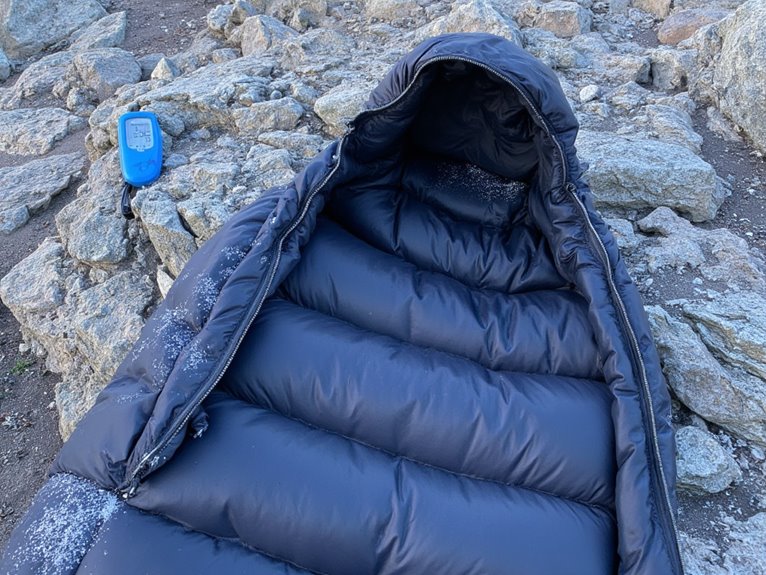
You’ve got your sleeping bag with its official temperature rating, but that number won’t tell the whole story about your comfort in the field.
Laboratory testing conditions differ profoundly from real-world scenarios where wind, moisture, ground temperature, and your personal metabolism all impact warmth retention.
Understanding these variables helps you interpret whether that comfort rating will actually keep you warm during your specific trip conditions.
Additionally, down insulation can lose up to 90% of its warming power when wet, making the rated temperature significantly less reliable in damp conditions.
Lab Vs Real Conditions
When you’re shopping for a sleeping bag, those temperature ratings printed on the label represent laboratory-tested values under controlled conditions—not the real-world performance you’ll experience in the backcountry.
Lab limitations become apparent when you factor in variables that standardized testing can’t simulate.
Real-world conditions introduce multiple factors that affect thermal performance:
- Wind, humidity, and moisture greatly impact heat retention compared to stable lab chambers
- Individual metabolic rates, sleep movement, and clothing choices alter actual warmth experienced
- Sleeping pad R-values, shelter quality, and external weather fluctuations affect overall system performance
Field testing consistently shows ratings can be off by several degrees. Most users find their bags feel 5-10°F warmer or colder than lab ratings suggest, depending on personal factors and environmental conditions.
Personal Comfort Variables
While standardized ratings provide a baseline, your personal physiology and sleep habits greatly influence how warm or cold you’ll feel in any sleeping bag. Individual differences in metabolism, body composition, and circulation patterns create significant variations in comfort levels.
Cold sleepers typically require temperatures at or above the Comfort rating for ideal rest. Warm sleepers often find comfort near the Lower Limit rating threshold.
Your height and weight affect heat retention since standardized tests assume average body dimensions. Women generally need higher temperature ratings than men due to metabolic differences.
Age also impacts comfort—older users typically require warmer ratings. Personal preferences for sleeping position, clothing layers, and ventilation further modify your thermal needs.
Consider these variables when selecting your bag’s temperature rating for reliable outdoor comfort.
Why Temperature Ratings Matter for Outdoor Safety
Temperature ratings serve as your primary defense against hypothermia, the leading cause of cold-weather emergencies that can occur when your core body temperature drops below 95°F (35°C).
You’ll need to match your sleeping bag’s comfort rating to expected nighttime lows, accounting for a 10-15°F safety buffer in uncertain conditions.
Understanding these standardized measurements guarantees you’re equipped with reliable emergency preparedness standards that can mean the difference between a safe night’s sleep and a life-threatening situation.
The type of insulation material in your sleeping bag significantly affects its ability to maintain warmth at rated temperatures, with down providing superior thermal efficiency in dry conditions while synthetic fills offer better performance when wet.
Preventing Hypothermia Risks
Understanding sleeping bag temperature ratings isn’t just about comfort—it’s a critical safety measure that can prevent life-threatening hypothermia during outdoor adventures.
When your body temperature drops below 95°F (35°C), you face serious health risks including impaired physical and mental function.
The EN/ISO standard’s three-tier rating system directly addresses hypothermia prevention by accounting for different physiological responses:
- Comfort rating – Temperature where women sleep comfortably without cold stress
- Limit rating – Lowest temperature men can sleep curled up without shivering
- Extreme rating – Emergency survival threshold where hypothermia risk becomes life-threatening
Each rating reflects different levels of insulation effectiveness based on standardized thermal testing.
You shouldn’t rely on Extreme ratings for regular use—they’re survival boundaries, not comfort zones.
Proper rating selection creates essential safety margins against cold-related injuries.
Matching Conditions Properly
How do you make certain your sleeping bag won’t fail when nighttime temperatures plummet below forecasted lows? Select a bag rated 5-10°F below the expected minimum temperature. This safety margin compensates for individual metabolism differences and external factors like wind or humidity.
Your sleeping bag layers work together with proper temperature adjustment strategies. Consider your typical sleep posture and cold tolerance when choosing between Comfort and Limit ratings.
| Rating Type | Temperature Range | Best For | Sleep Quality | Safety Level |
|---|---|---|---|---|
| Comfort | +5°F above minimum | Relaxed sleepers | High | Excellent |
| Limit | At minimum temp | Cold-tolerant users | Moderate | Good |
| Extreme | Survival only | Emergency situations | Poor | Survival |
| Safety Margin | -5°F below minimum | Conservative planning | Ideal | Maximum |
| Children’s | Varies by manufacturer | Youth gear | Variable | Requires verification |
Match individual factors like body fat, metabolism, and sleeping pad insulation to rating selection for ideal performance.
Emergency Preparedness Standards
When survival depends on your gear’s performance, ISO 23537 temperature ratings become critical safety benchmarks rather than mere comfort guidelines.
Emergency gear selection requires understanding the difference between Comfort, Limit, and Extreme ratings to prevent hypothermia in life-threatening situations.
Your risk assessment must account for these standardized thresholds:
- Comfort rating provides the temperature where you’ll sleep warmly without additional layers.
- Limit rating indicates the lowest temperature for survival sleep with minimal discomfort.
- Extreme rating represents the survival threshold where hypothermia risk becomes severe.
Emergency preparedness demands conservative gear choices.
Select bags rated 5-10°C below expected conditions to maintain safety margins.
The thermal mannequin testing guarantees consistency across manufacturers, but real-world variables like wind, humidity, and your metabolic rate affect actual performance during critical situations.
Real-World Factors That Affect Sleeping Bag Performance
While laboratory testing provides standardized temperature ratings, real-world sleeping bag performance depends on numerous variables that can dramatically alter your warmth and comfort levels.
Environmental conditions create the biggest performance gaps. Wind penetrates tent walls and bag drafts, increasing convective heat loss by 10-15°F.
Wind infiltration through tent fabric and sleeping bag seams can steal 10-15°F of warmth through increased convective cooling.
Ground cold transfers through inadequate sleeping pads—a pad with R-2 instead of the tested R-5.5 standard can reduce effective warmth by 20°F. Wet conditions compromise real world insulation effectiveness, particularly in down bags.
Your physiology matters equally. Low metabolic rates, dehydration, and insufficient clothing layers all reduce warmth generation.
Bag compression from tight fits or side sleeping eliminates essential loft. Movement during sleep opens zippers and displaces insulation, creating cold spots that laboratory testing can’t replicate.
Choosing the right sleeping pad with appropriate R-values becomes critical since air mattresses generally provide lower thermal efficiency than specialized sleeping pads designed for cold weather conditions.
Choosing the Right Sleeping Bag Based on Ratings
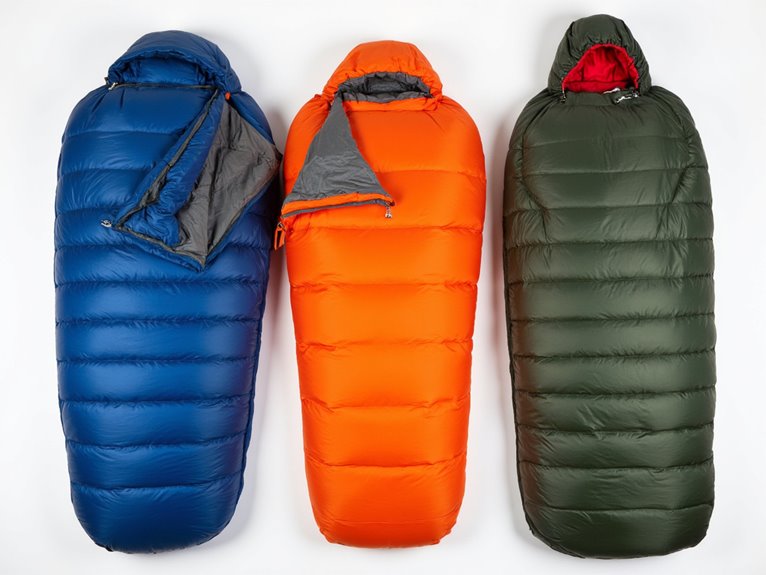
Understanding EN/ISO temperature ratings forms the foundation for selecting the right sleeping bag, but translating those laboratory numbers into real-world performance requires careful analysis of your specific needs.
Start by identifying the coldest temperature you’ll encounter during your outdoor activities. Match this to the appropriate EN/ISO rating—Comfort for average sleepers, Limit for those who sleep warm. Factor in your personal metabolism and body type when interpreting these standardized ratings.
Consider these critical selection factors:
- Sleeping bag materials and insulation types that suit your climate conditions
- Weight and packability requirements for your specific outdoor activities
- Additional insulation needs like sleeping pads and tent thermal properties
Compare products across manufacturers using standardized EN/ISO labels. Remember that laboratory conditions differ from real-world scenarios, so build in a safety margin of 5-10 degrees Fahrenheit below expected temperatures. For effective three-season use, experts recommend selecting temperature ratings that are 10-15°F below your expected camping conditions to ensure adequate warmth and safety margins.

